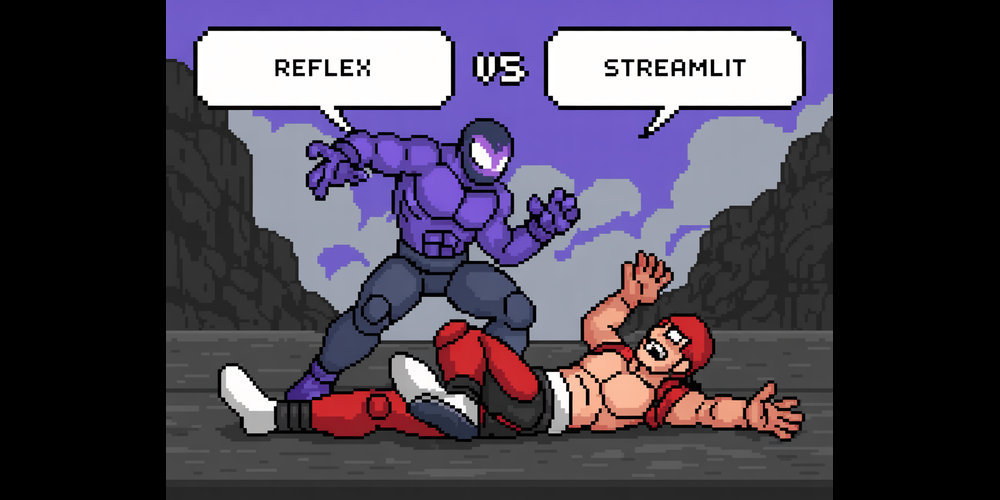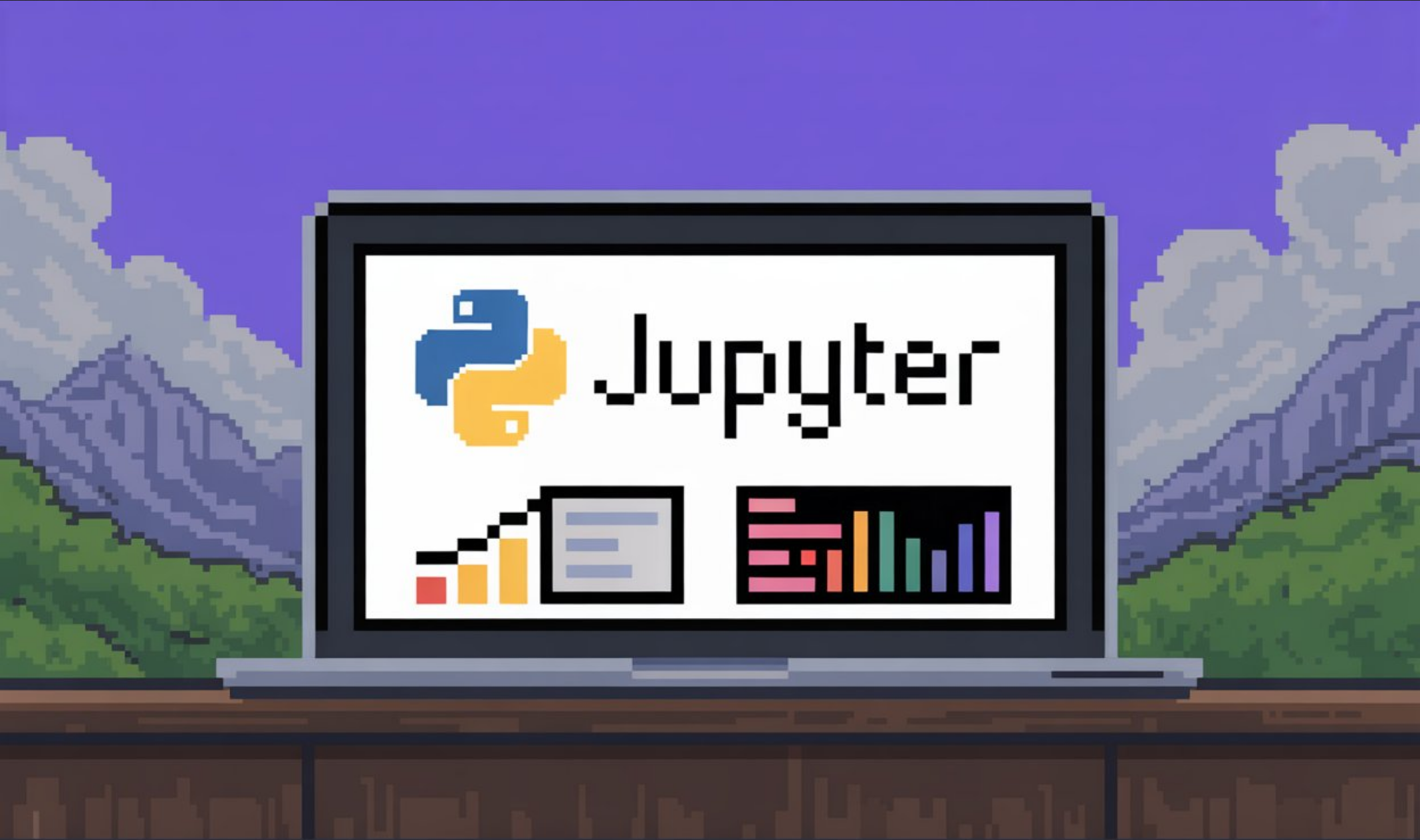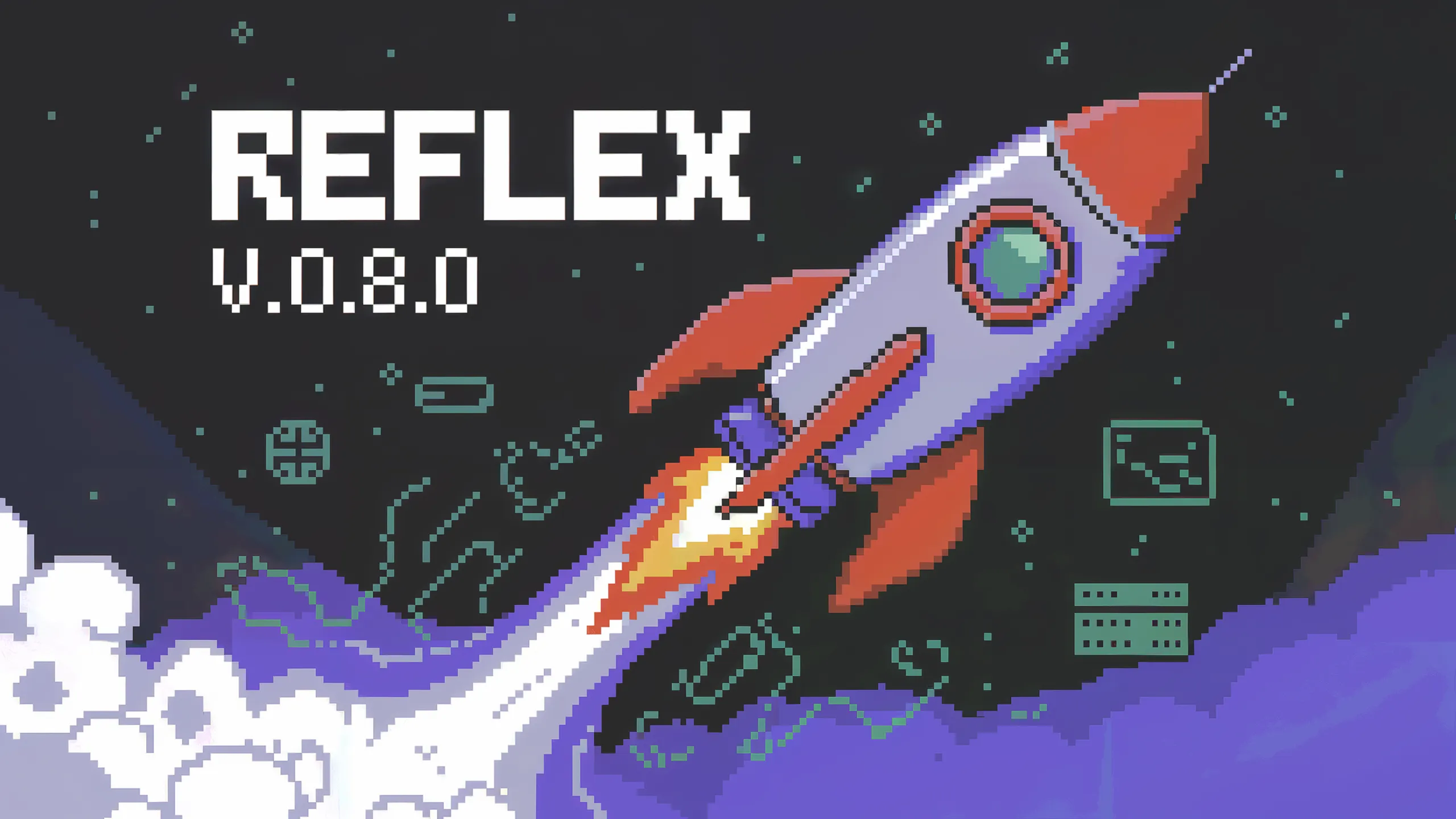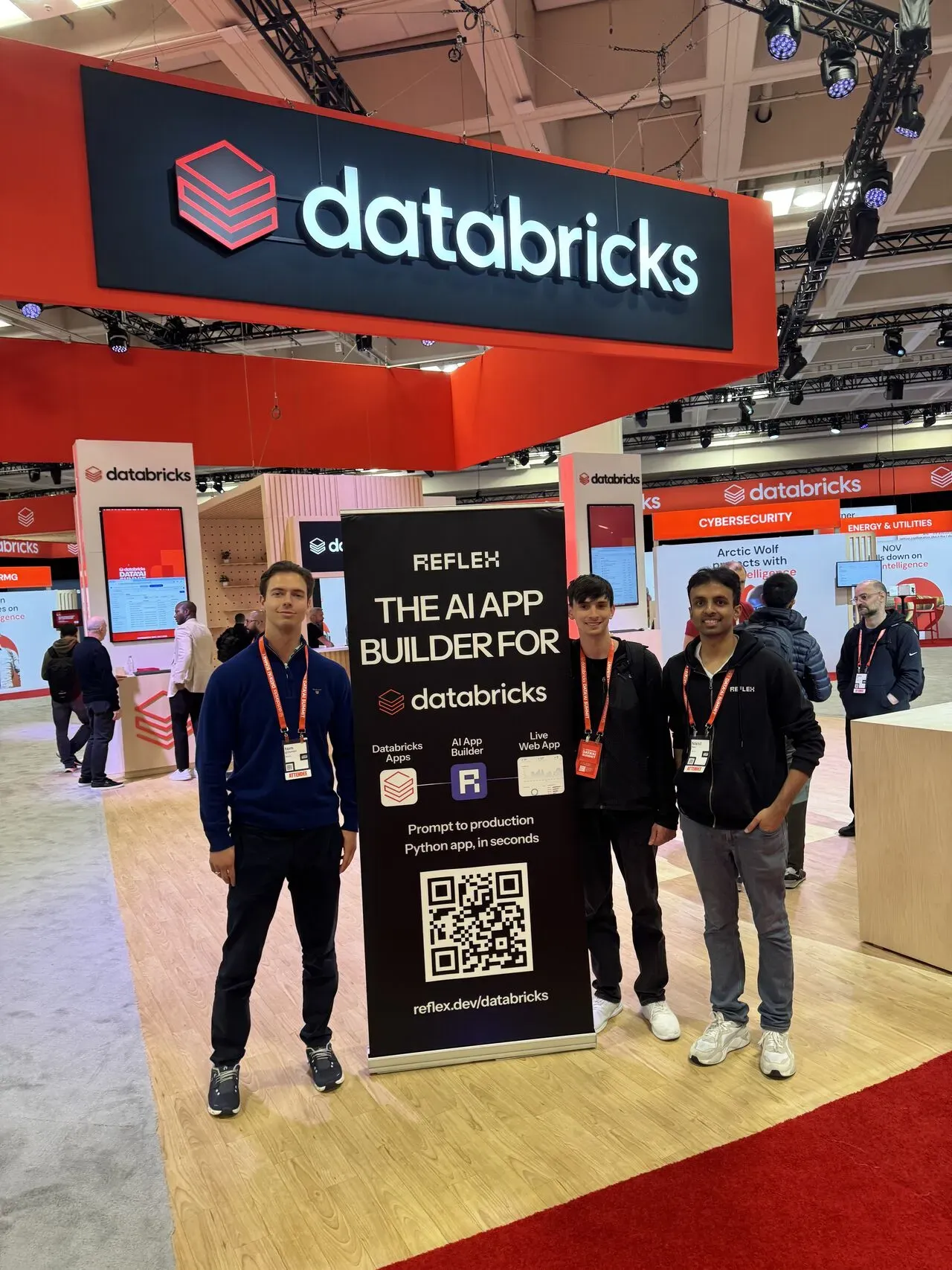Reflex vs Streamlit
A head‑to‑head comparison of two Python frameworks for building fast, interactive web apps
Tom Gotsman
·

Reflex and Streamlit are two frameworks enabling Python developers to create interactive web applications without writing JavaScript. Both let you build UIs and dashboards using only Python, but they differ significantly in design and capabilities. Below we compare Reflex and Streamlit across key dimensions – from framework architecture to components, interactivity, deployment, and ecosystem – highlighting each tool’s strengths and weaknesses for general Python developers.
Strengths
- End-to-end Python stack – backend (FastAPI/Uvicorn) and frontend (compiled React/Next.js) are generated from pure Python. No HTML/CSS/JS required and data/state flow is automatic via WebSockets.
- Declarative, state-driven model – you define state classes and UI components; changes propagate reactively, keeping code organized and concise for larger apps.
- Multi-page & routing out-of-the-box – true URL routes, layouts, and SEO-friendly pages are built in.
Weaknesses
- Younger project – API still evolving; occasional breaking changes.
- Requires a build step – code is compiled to JS, so hot-reloading isn’t as instant as Streamlit’s script reruns.
Strengths
- Single-file Python script paradigm – write, save, run; Streamlit handles rendering. Perfect for rapid prototyping.
- Zero web-framework knowledge needed – imperative “top-to-bottom” execution model feels like a Jupyter notebook gone web.
Weaknesses
- No real backend layer – everything runs in the same process; REST APIs, background jobs, or complex server logic live elsewhere.
- Limited multi-page structure – basic multipage support exists, but no true routing or nested layouts.
Strengths
- 60 + built-in components with Tailwind styling props; modern look by default.
- Wrap any React component – easy path to custom or third-party widgets.
- Fine-grained CSS control when you need pixel-perfect UIs.
Weaknesses
- Smaller ecosystem today – fewer pre-wrapped community widgets; sometimes you must dive into React/Tailwind.
Strengths
- Rich core widgets (
st.slider,st.dataframe,st.map, etc.) that “just work” with one line.
- Community Components hub offers plug-and-play extras (date pickers, video, chat, etc.).
- Clean default theme – no styling effort needed for decent visuals.
Weaknesses
- Customization ceiling – deep CSS/HTML tweaks are hard; layout is mostly vertical with limited responsiveness.
- Truly bespoke widgets require writing a Streamlit Component in React/TypeScript.
Strengths
- Server-side state per session – Python variables persist, enabling multi-step flows and user-specific data.
- Real-time WebSocket updates – only affected components re-render; great for live data feeds.
- Async background tasks – run long jobs without blocking the UI, then push results back.
Weaknesses
- More concepts to learn – state classes, event handlers, async flows.
- Memory footprint per user – each session holds state on the server.
Strengths
- Simple “script rerun” model – every widget change re-executes the script; easy to reason about.
- Built-in caching &
st.session_statefor memoization and basic persistence.
Weaknesses
- Full reruns can be expensive for heavy computations or large datasets.
- No server push – real-time or background updates need client polling or hacks.
Strengths
- Standard web app architecture – FastAPI backend + static React assets; easy to containerize and scale behind a load balancer.
- Built-in auth, ORM, migrations – fewer external services to wire up.
- Async ASGI server handles high concurrency gracefully.
Weaknesses
- WebSocket scaling complexity – may need sticky sessions or shared state store at large scale.
- DevOps heavier than “run a script”; CI/CD and observability are developer’s responsibility unless using Reflex Cloud.
Streamlit
Strengths
- Dead-simple deploy –
streamlit run app.pyon any VM or Streamlit Cloud; great for internal tools & demos. - Stateless horizontal scaling – spin up more identical instances behind a load balancer.
Weaknesses
- No built-in auth / RBAC – must front with proxy or custom code for secure apps. - Single-threaded long callbacks can block; heavy workloads and many users demand external queues or micro-services.
Strengths
-
Rapidly growing open-source community; React + Python combo means huge potential for extensions.
-
Active core team, frequent releases, YC-backed funding.
Weaknesses
- Fewer tutorials, templates, and Q&A than mature rivals; early adopters may hit undocumented edges.
Strengths
- Large, established community, tons of tutorials, and Snowflake backing.
- Dozens of ready-made community components and example apps.
Weaknesses
- Framework reaches limits quickly for complex, production-grade apps; many feature requests answered with work-arounds.
- Pick Streamlit if you need speed and simplicity for prototypes, data explorations, or lightweight internal dashboards. Minimal setup, minimal code.
- Pick Reflex when you foresee multi-page navigation, real-time features, auth, or database-backed workflows and want to stay entirely in Python without handing off to front-end engineers.
Both tools lower the barrier to web apps for Python developers—your decision hinges on whether ultimate simplicity (Streamlit) or full-stack power and structure (Reflex) better fits your project’s trajectory.
More Posts

Turn Jupyter Notebooks into Production Dashboards in Python
Convert Jupyter notebooks into interactive, production-ready dashboards with Python and Reflex. Keep your pandas logic, add UI, and deploy in minutes.
Ahmad Al Hakim

Reflex v0.8.0 - Refactoring for Performance
Major improvements in Reflex v0.8.0 developer experience and performance.
Reflex Team

Reflex x Databricks: Python-Powered Vibe Coding for Enterprises
We're excited to announce our official partnership with Databricks and the launch of our Reflex AI Builder integration with Databricks Apps.
Reflex Team